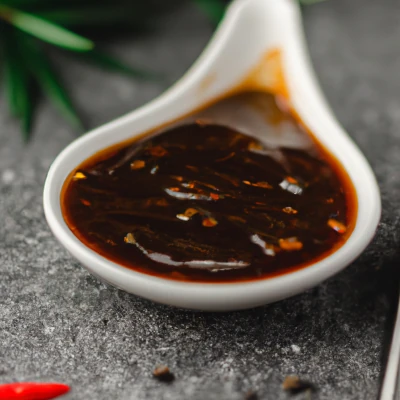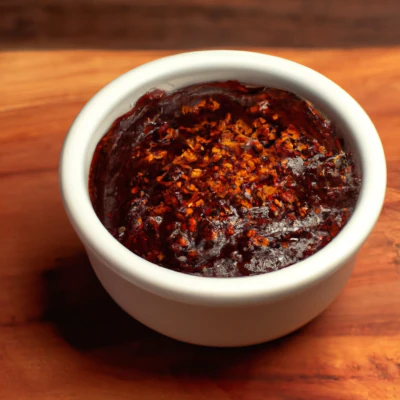Simple Egg Fried Rice

Craving a quick, flavorful, and satisfying meal? Our Simple Fried Rice recipe is the perfect solution! This classic comfort food, born from ancient Chinese kitchens and adapted across the globe, is made with cold, dry rice, flavorful aromatics, and your favorite add-ins, all cooked in a hot skillet for a delightful crispy texture. Whether you're using leftover rice or cooking a fresh batch, this recipe is a versatile and delicious way to enjoy a homemade meal in minutes.

Ingredients
4 cups cooked rice, cold and dried 2 tablespoons vegetable oil 2 large eggs, lightly beaten 4 scallions, white and green parts separated and thinly sliced 2 garlic cloves, minced 2 tablespoons soy sauce 1 tablespoon sesame oil 1 cup mixed vegetables (peas, carrots, corn, etc.) Cooked protein (chicken, shrimp, pork, etc.)
Method
- 1. Prepare the Rice: Cook long-grain rice according to package directions. Spread the cooked rice on a rimmed baking sheet and let it cool completely. For best results, let it air-dry for at least an hour or refrigerate overnight.
- 2. Cook the Eggs: Heat 1 tablespoon of vegetable oil in a large skillet or wok over high heat. Add the beaten eggs and cook, stirring constantly, until scrambled and cooked through. Transfer to a plate.
- 3. Sauté Aromatics: Add the remaining 1 tablespoon of vegetable oil to the skillet. Add the white parts of the scallions and the minced garlic. Cook, stirring, until fragrant, about 30 seconds.
- 4. Add Rice and Vegetables: Add the cold, dried rice to the skillet. Break up any clumps with a spatula. Add mixed vegetables and cooked protein (if using). Cook, stirring constantly, until the rice is heated through and slightly crispy, about 3-5 minutes.
- 5. Season and Finish: Stir in the soy sauce, sesame oil, and the cooked scrambled eggs. Cook for another minute, stirring to combine. Stir in the green parts of the scallions. Serve immediately.

The History of Fried Rice
Fried rice, a dish beloved worldwide, has a rich and fascinating history that spans centuries and continents. Its origins can be traced back to ancient China, specifically the Sui Dynasty (589-618 AD), where it was first documented. This dish emerged as a resourceful way to utilize leftover rice, a staple in Chinese cuisine. By stir-frying the rice with various ingredients, cooks transformed what would have been discarded into a flavorful and satisfying meal.
The concept of fried rice quickly spread throughout Asia, adapting to local ingredients and culinary traditions. In Southeast Asia, variations like Nasi Goreng in Indonesia and Khao Pad in Thailand emerged, each showcasing unique regional flavors. In Japan, Chahan became a popular dish, often incorporating ingredients like seafood and vegetables.
As Chinese immigrants traveled the globe, they brought their culinary traditions with them, introducing fried rice to new cultures. In the Americas, fried rice became a staple in Chinese-American restaurants, often featuring ingredients tailored to local tastes. This global journey has resulted in a vast array of fried rice variations, each reflecting the unique culinary heritage of its region.
Key Ingredients and Techniques
The key to a perfect fried rice lies in the use of cold, cooked rice. This allows the grains to separate and crisp up during cooking, preventing a mushy texture. Aromatics like garlic, ginger, and scallions form the flavor base, while ingredients like soy sauce, sesame oil, and oyster sauce add depth and umami. Vegetables such as peas, carrots, and corn are commonly added, along with proteins like eggs, chicken, shrimp, or pork.
The cooking technique is also crucial. High heat and constant tossing in a wok or large skillet ensures that the ingredients cook quickly and evenly, creating a smoky, slightly charred flavor known as "wok hei." This rhythmic tossing, rather than just stirring, allows the rice to be lifted and flipped, exposing it to the intense heat and developing its characteristic texture. This technique not only enhances the taste but also gives fried rice its characteristic texture.
Regional Variations and Cultural Significance
In China, Yangzhou fried rice is a classic variation, featuring shrimp, ham, and vegetables. In India, vegetable fried rice is a popular vegetarian option, often spiced with garam masala and other aromatic spices. In Latin America, Arroz Chaufa, a Peruvian-Chinese fusion dish, incorporates ingredients like soy sauce, ginger, and eggs, along with local ingredients like bell peppers and onions.
Fried rice has also become a symbol of resourcefulness and culinary creativity. Its ability to transform leftovers into a delicious meal has made it a staple in households around the world. Whether served as a quick weeknight dinner or a celebratory dish at a family gathering, fried rice continues to be a beloved comfort food.
Modern Interpretations and Global Appeal
Today, fried rice continues to evolve, with chefs and home cooks experimenting with new ingredients and flavor combinations. Fusion variations, such as kimchi fried rice or chorizo fried rice, showcase the versatility of this dish. The rise of food trucks and pop-up restaurants has also brought innovative fried rice creations to a wider audience, featuring gourmet ingredients and unique flavor profiles.
From its humble beginnings as a way to use leftover rice to its current status as a global culinary icon, fried rice has proven its enduring appeal. Its simple yet satisfying nature, combined with its adaptability to various ingredients and flavors, ensures that it will remain a beloved dish for generations to come.

-

Granny's Homemade Teriyaki Sauce
Embark on a culinary journey with Granny's Homemade Teriyaki Sauce. This sweet and savory sauce is a breeze to prepare and perfect for marinating, dipping, and stir-frying.
-

General Tao’s Sauce
Granny’s General Tao’s Sauce is a kitchen essential for your homemade Chinese cuisine. This delightful sauce combines sweet, spicy, and tangy flavors that would elevate your stir-fried dishes, dumplings, egg rolls, and more.
-

Sweet and Sour Sauce
Granny's Homemade Sweet and Sour Sauce delivers the perfect balance of tangy and sweet. Made with vinegar, sugar, and spices, it's ideal for dipping, stir-fries, and glazing meats.